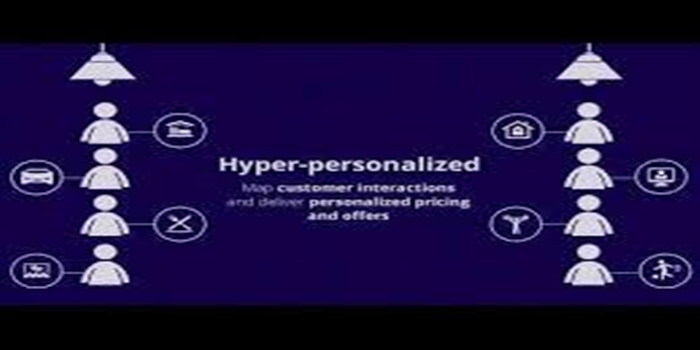In this post, we discussed the meaning of hyper personalized pricing, the features, the examples, we also talked about the benefits.
Definition
Hyper-personalized pricing refers to a classy approach where the price of a product or service is tailored to the individual customer based on their specific characteristics, behaviors, and needs. This goes beyond traditional personalization by using advanced data analytics, AI, and automation to create truly unique experiences.
Benefits of Hyper Personalization:
Better engagement: Hyper-personalization can highlight features of a product that have a higher chance of appealing to each customer, which increases engagement. It guides users to interact with a product more often and engage in new ways.
Improved resource allocation: Hyper-personalized messages and products are a better use of resources because they’re more likely to drive short- and long-term business value. Generic experiences don’t resonate with customers as effectively, and generally deliver a lower return-on-investment (ROI). However, tailoring experiences to the recipient allows businesses to get the most out of every asset they create rather than spending money on strategies with a lower probability of success.
Higher conversion rates: Nearly 60% of business leaders consider personalization an effective strategy for acquiring new customers. When you use data to target customers with personalized ads and marketing campaigns, people are more likely to understand how your business meets their specific needs.
Increased customer satisfaction and retention: Personalized experiences result in 56% of consumers becoming repeat buyers. Communications and products that are tailored to a specific individual are more relevant and enjoyable, boosting customer satisfaction and improving retention.
More customer referrals: Customers are 78% more likely to recommend a company to friends and family when it provides personalized experiences. When satisfied users promote you to their network, it brings in new business and increases your reputation.
Increased revenue: Across sectors, hyper-personalization generates a 10-15% revenue increase, with fast-growing companies deriving 40% more income than competitors from the tactic. Higher conversion rates and greater retention from hyper-personalization adds up to an overall increase in revenue.
More targeted messages and products: Hyper-personalization leads customers through journeys that are tailored to their specific concerns and interests. This helps make sure that customers only receive and engage with relevant messages and product offerings.
Faster discovery process: Customers are more likely to find products and services they’re interested in with personalized advertisements and recommendations. By using data to identify consumer preferences, hyper-personalization can provide solutions to unique problems and specific desires.
Greater product value: Personalization makes recommendations based on customers’ data to help them get the most out of what they already have. This increases the value of the product for the end user.
The Features of Hyper personalized pricing:
Real-time Data:
Hyper-personalized pricing leverages real-time customer data, including browsing history, purchase behavior, and location, to adjust prices instantly.
Individualized Pricing:
Instead of applying a one-size-fits-all price, each customer receives a unique price tailored to their specific needs and preferences.
Advanced Algorithms:
Complex algorithms and AI are used to analyze vast amounts of data and predict the optimal price for each customer.
Dynamic Adjustment:
Prices can change dynamically based on factors like demand, competitor pricing, and the customer’s specific profile.
Enhanced Customer Experience:
Personalized pricing creates a more engaging and tailored experience, potentially leading to increased satisfaction and loyalty.
Increased Revenue:
By offering personalized deals and promotions, businesses can capture more revenue from each customer.
Data-Driven:
The entire process relies on comprehensive data collection and analysis to inform pricing decisions.
Potential for Fairness Concerns:
Some customers may perceive hyper-personalized pricing as unfair or deceptive, especially if they believe their prices are arbitrarily higher or lower than others.
Technology and Infrastructure:
Businesses need robust technology and infrastructure to manage and process the vast amount of data required for hyper-personalized pricing.
Balancing Profit and Trust:
A fine balance needs to be struck between maximizing profits and maintaining customer trust, which can be damaged if pricing seems unfair or manipulative.
The Examples of Hyper personalized pricing:
Airline Loyalty Programs:
Airlines often adjust prices based on factors like customer loyalty status (e.g., elite members may get better deals or discounts), travel frequency, and previous booking history.
E-commerce Platforms:
Online retailers may offer personalized discounts or promotions to customers who have previously expressed interest in a particular product or category.
Subscription Services:
Services like Netflix or Spotify may adjust pricing based on a customer’s usage patterns, viewing habits, or listening preferences.
Online Banking:
Banks can offer personalized financial advice or investment recommendations based on a customer’s financial profile, investment goals, and risk tolerance.
Hotels.com:
Uses customer data to offer personalized deals, destination suggestions, and promotions tailored to individual preferences and travel history.
Naked Wines:
Uses customer feedback and past behavior to generate personalized emails, offering recommendations, calls to action, and invitations to events.
Bank of America’s Erica:
Uses a customer’s account balances, transaction history, and spending patterns to provide personalized, proactive financial advice, The Banker notes.
These examples demonstrate how businesses can use data to create hyper-personalized pricing strategies that lead to increased customer engagement and sales.
Conclusion
Hyper-personalized pricing exclusively targets customers based on their online behaviour, purchases, and tastes. Hyper personalization works more effectively than other pricing strategies as it is based on key user features, such as their willingness to pay — the maximum price users are willing to pay for a product.

